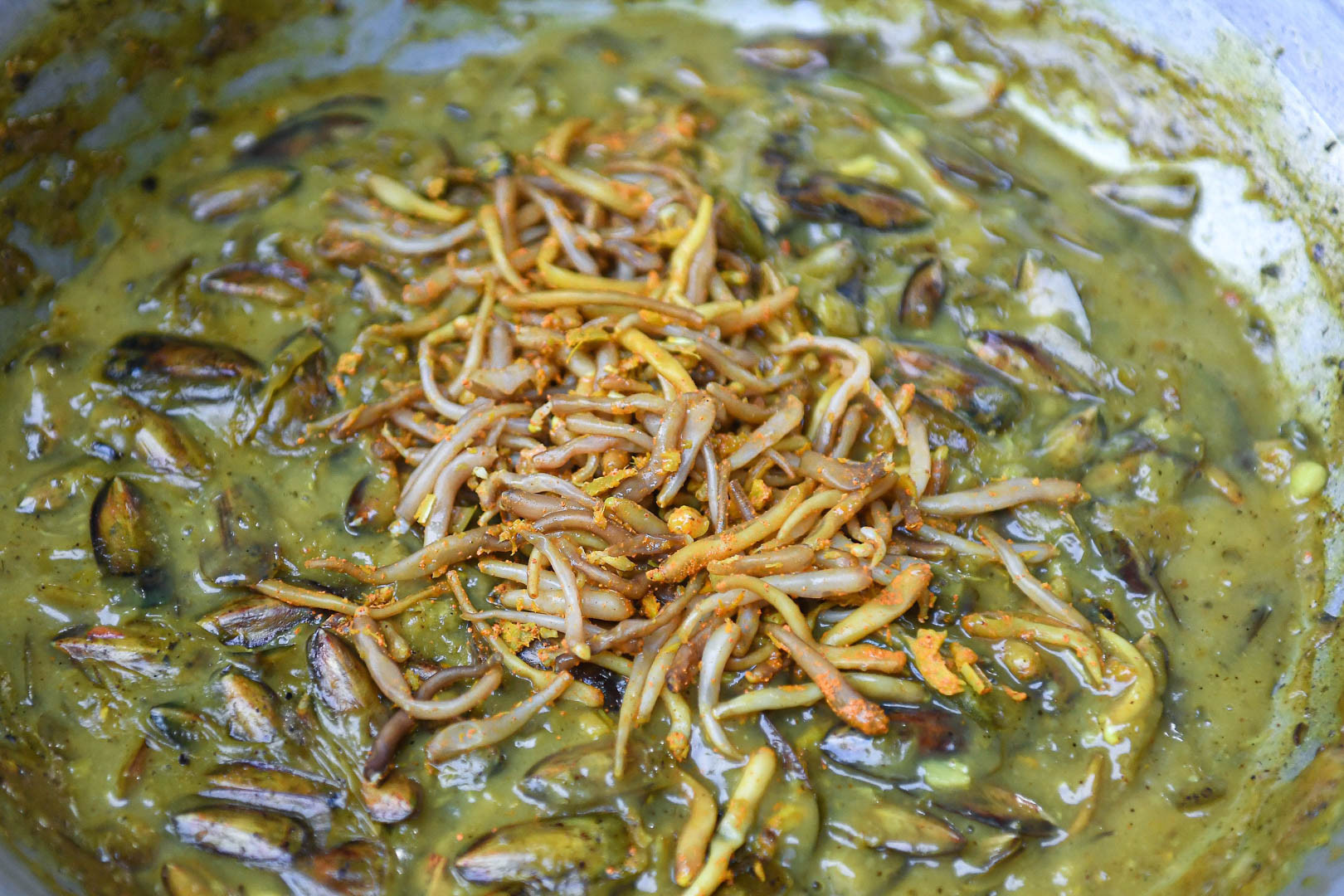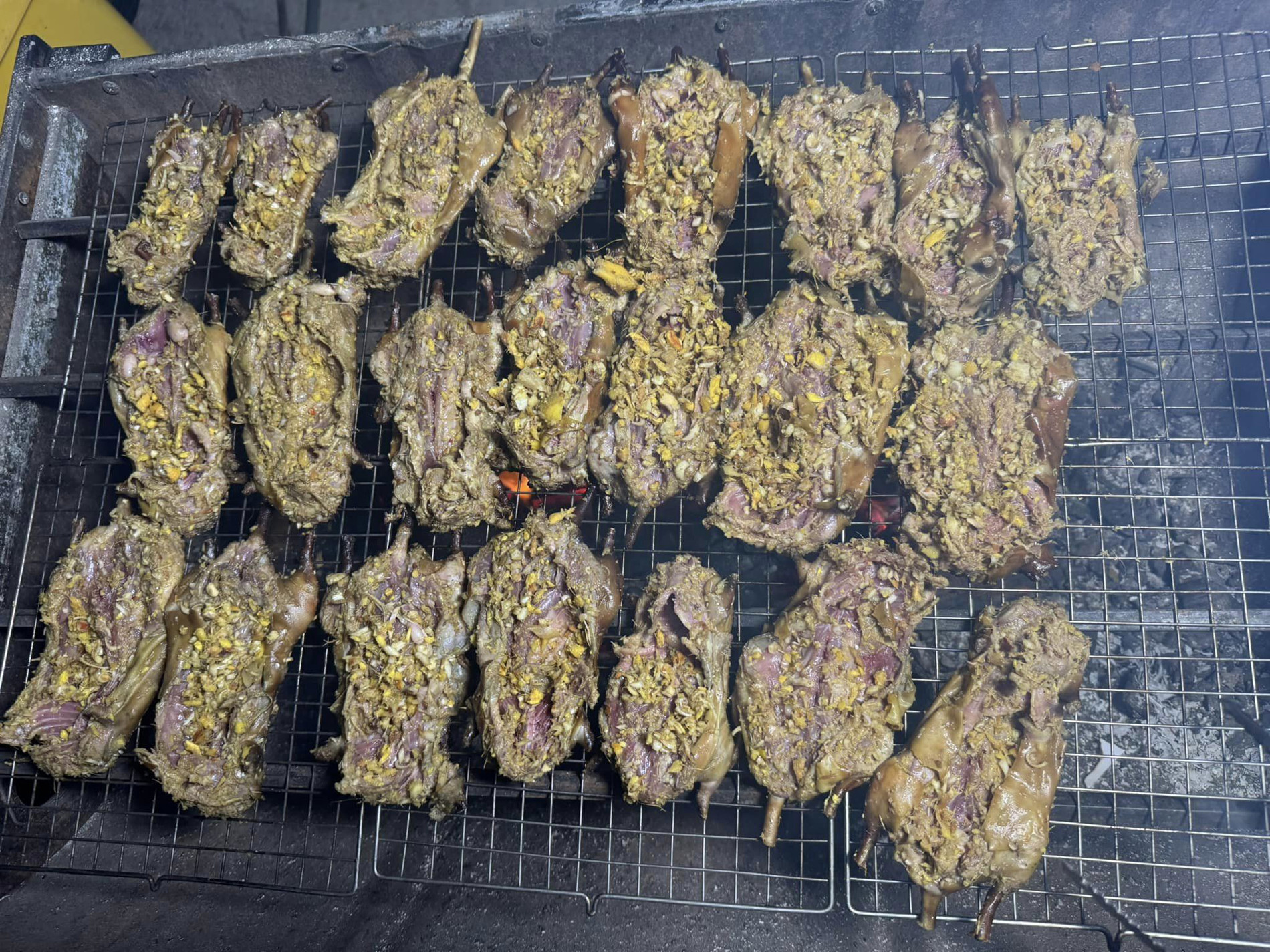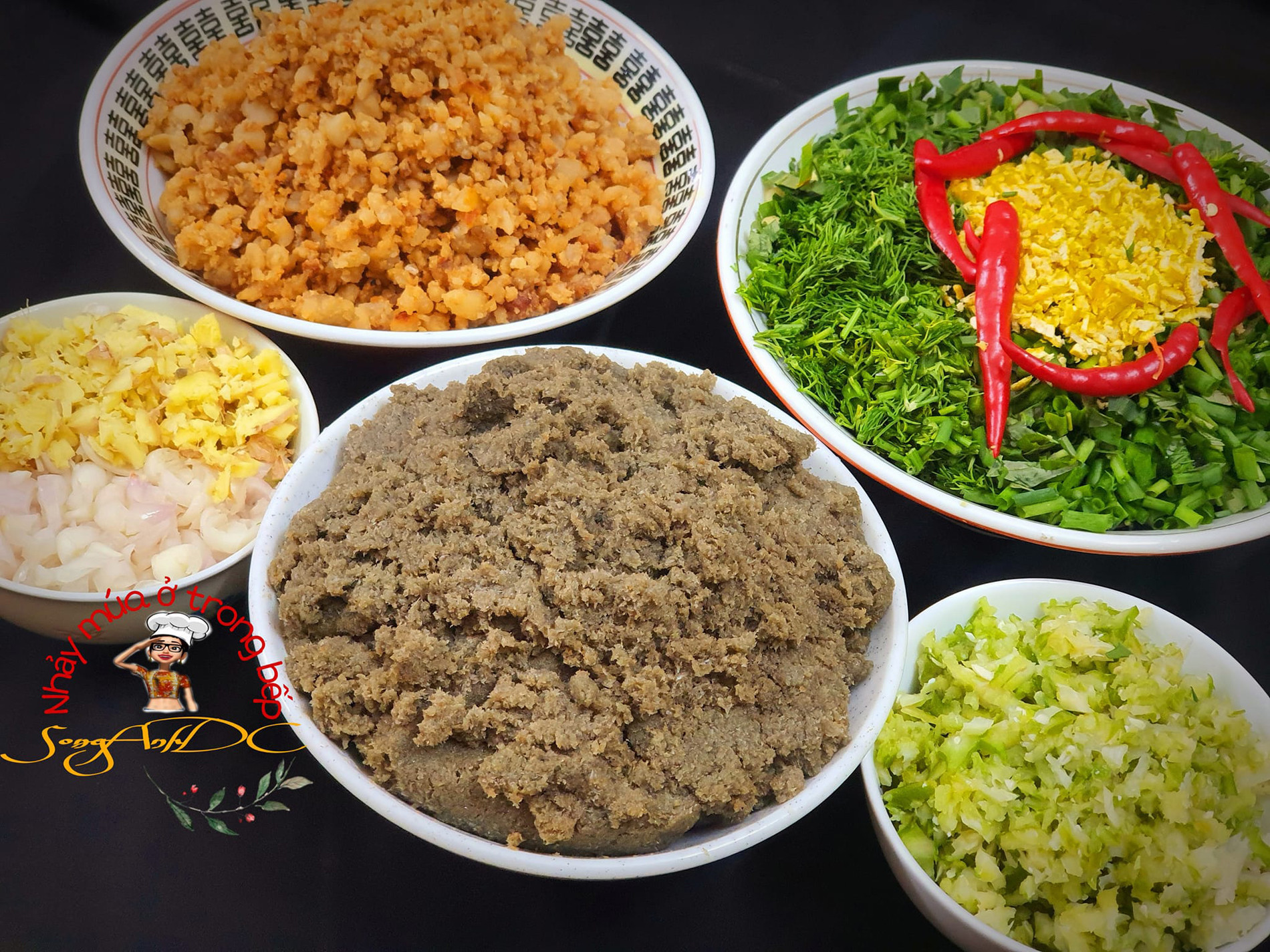From grilled field rats to worm-like mollusks, Hai Phong’s cuisine is filled with curious delicacies that might shock newcomers but delight the adventurous eater. Beyond the initial hesitation, dishes like gía bể xào and ruốc sông win diners over with their rich, distinctive flavors.
Gía bể xào (Stir-fried beach mollusk)

Gía bể, also known as beach mollusk, is a soft-shelled bivalve with a greenish shell, found in the coastal areas of Hai Phong such as Trang Cat (Hai An District), Do Son (Do Son District), and Cat Ba (Cat Hai District). These mollusks live buried in sandy beaches, with long legs protruding out to search for food.
After cleaning, the legs are separated while the rest of the body remains in its shell and is stir-fried with shallots, garlic, galangal, lemongrass, turmeric powder, vinegar, and seasoning. To thicken the sauce, chefs often use diluted tapioca or wheat starch. The result is a golden-yellow dish, bursting with aroma and served with a thick, savory sauce.
Since this dish is best enjoyed hot, it’s often kept warm in small pots over charcoal. Cooked legs are placed neatly atop the sauce, creating a visually striking and aromatic experience.
Field rat meat

Field rat meat is a familiar dish in several rural districts of Hai Phong, including Kien Thuy, Vinh Bao, and Tien Lang. What was once a farmer’s meal has become a local delicacy attracting foodies from neighboring areas.
While rat meat can be cooked in various ways, boiling remains the most popular method, as it preserves the meat’s original flavor. After thorough cleaning, the rat is tightly rolled and boiled for 7–10 minutes. The boiling water is often infused with ginger, salt, scallions, fish sauce, and pepper to enhance the flavor.
Locals typically don’t eat it right away but allow it to dry overnight or press it with lá ré (wild ginger leaves), which makes the meat firmer and more aromatic. It’s often served with ginger fish sauce and chili or simply dipped in salt, chili, and lime juice.
Ruốc sông (River shrimp)

Ruốc sông, or river shrimp, is a tiny crustacean about the size of a grain of sand, found in brackish riverbanks in Quang Ninh, Thai Binh, Hai Duong, and most commonly in Hai Phong.
These creatures come in three main colors: reddish-brown (the most flavorful), dark brown (old shrimp), and pale pink (young shrimp).
In Hai Phong, ruốc sông is used in various dishes like shrimp paste, stir-fries, or most commonly, simmered with tomatoes. After filtering and washing multiple times, the shrimp are dried and sautéed with shallots and tomatoes, then seasoned and mixed with ginger leaves, sour starfruit slices, and Vietnamese coriander.
The sour notes from the tomatoes and starfruit, combined with the aroma and gentle heat from the ginger leaves, make this dish a flavorful companion to hot rice.
Thao Trinh